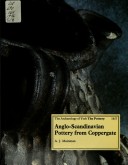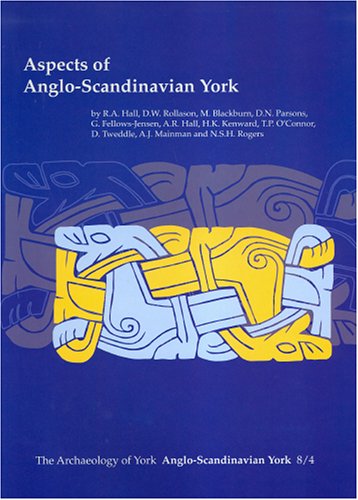Archaeology of York
1 primary work • 4 total works
Book 17
v. 8, fasc. 4
Aspects of Anglo-Scandinavian York
by R a Hall, D. W. Rollason, M Blackburn, D. N. Parsons, Gillian Fellows-Jensen, A R Hall, H.K. Kenward, T P Oconnor, D. Tweddle, and A. J. Mainman
Published 1 December 2005
Key aspects of the evidence for Viking-Age or Anglo-Scandinavian York are presented in a series of thematic essays that summarise the present state of knowledge, demonstrate the approaches to the data now being taken, illustrate current scholarly preoccupations and reveal some of the themes that require further attention. A historiographical introduction by Richard Hall sets the scene by summarising the main episodes of data gathering and the emphases of antiquarian and scholarly enquiry. Documentary evidence is then examined by David Rollason to determine what it independently indicates about the character and history of the city, and Mark Blackburn proffers interpretations of the coinage struck for York's rulers before the final Anglo-Saxon re-conquest in the mid 10th century. The juxtaposition of these two chapters emphasises the range of opinions that exist about the power structures underlying York's 10th-century urban renaissance. Essays on long-established fields of study, the inscriptions (by David N. Parsons) and the street-names of Viking-Age York (by Gillian Fellows-Jensen), both place their subjects within a national and international framework.
These two essays, and that by Dominic Tweddle on art, provide insights into the evolution of new cultural norms. The important new insights provided by more recently established disciplines - the study of animal bones, and of other biological evidence, notably plant and insect remains - are discussed by Terry O'Connor, Allan Hall and Harry Kenward. A synthesis of recent artefact studies by Ailsa Mainman and Nicola Rogers provides both an overview of craft activity in Jorvik and a focus upon the range of information revealed in YAT's excavations at 16-22 Coppergate. Evidence for the evolving topography of the settlement throughout the two centuries under discussion is presented by Richard Hall.
These two essays, and that by Dominic Tweddle on art, provide insights into the evolution of new cultural norms. The important new insights provided by more recently established disciplines - the study of animal bones, and of other biological evidence, notably plant and insect remains - are discussed by Terry O'Connor, Allan Hall and Harry Kenward. A synthesis of recent artefact studies by Ailsa Mainman and Nicola Rogers provides both an overview of craft activity in Jorvik and a focus upon the range of information revealed in YAT's excavations at 16-22 Coppergate. Evidence for the evolving topography of the settlement throughout the two centuries under discussion is presented by Richard Hall.
Volume 16, fascicule 9
AY 17/14


